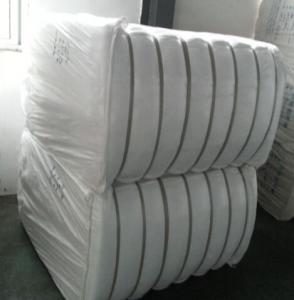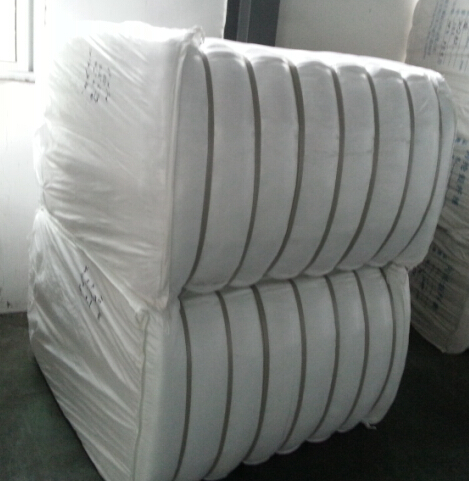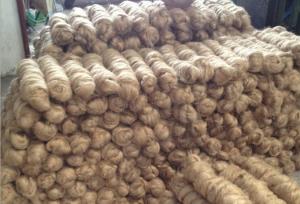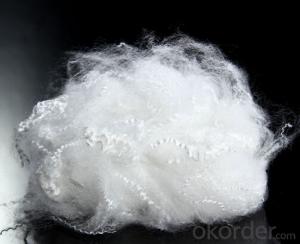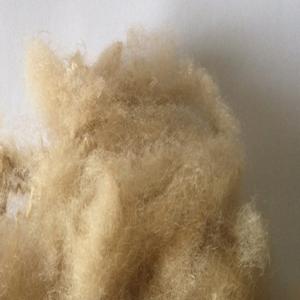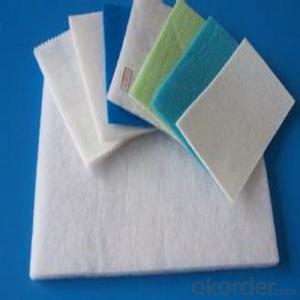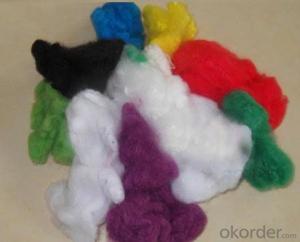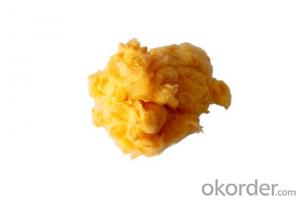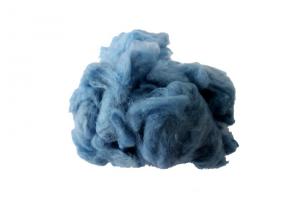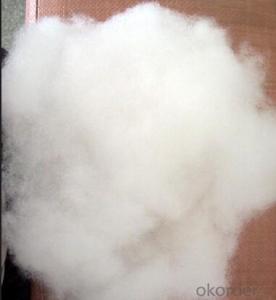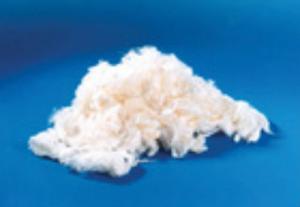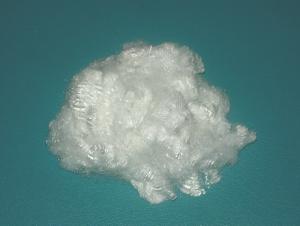Polyester Staple Fiber 15DX32MM for Nonwoven Fabric
- Loading Port:
- China main port
- Payment Terms:
- TT OR LC
- Min Order Qty:
- 10 m.t.
- Supply Capability:
- 5000 m.t./month
OKorder Service Pledge
OKorder Financial Service
You Might Also Like
The "15DX32MM HCS Polyester Saple Fiber" is the environment friendly recycling product, which is widely used as the raw materials of bedding and clothing, toy, cushion and nonwoven cloth.
Feature of 15DX32MM HCS Polyester Saple Fiber
1) Siliconized
2) Denier: 15DX32MM HCS
3) Raw white
Usage of 15DX32MM HCS Polyester Saple Fiber
PET nonwoven geotextile Application:
Filtration
The filtration layer of the dykes, river canal, seacoast, concrete slope, retaining walls. At the same time of preventing the clay granule from passing, it allows the water and the gas pass through freely.
Separation:
The isolation of the railway dregs and the roadbed, roadbed and the soft base, surface of the
airdrome and parking lot and the groundsill, different dam materials. It isolates the soil and the gravel of two kinds different granule pathway from the groundsill or other buildings.
Adding muscle:
The highway, railway, soil-stone dam, breakwater, airport, backfill soil of retaining wall, slope protection, etc in which distributes the earth stress, prevents the side-displacement of the earth body and improves the earth body stability.
Protection
It prevents the bank from being washed out, protects the bank and the bottom, prevents the water and soil from being washed away.
Package of 15DX32MM HCS Polyester Saple Fiber
Packed with PP woven bag, each bale is around 300kg.
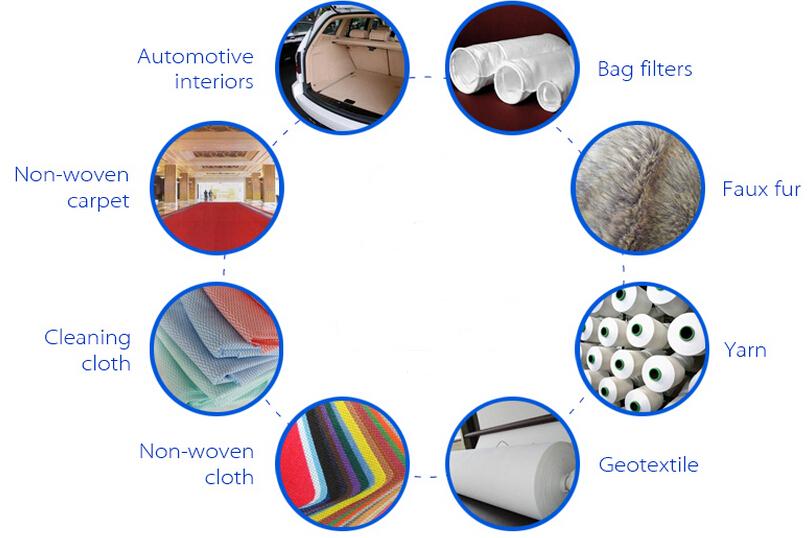
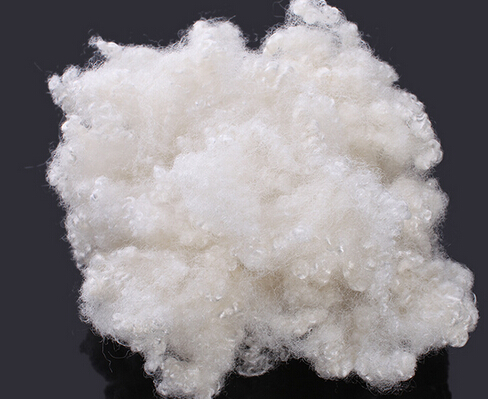
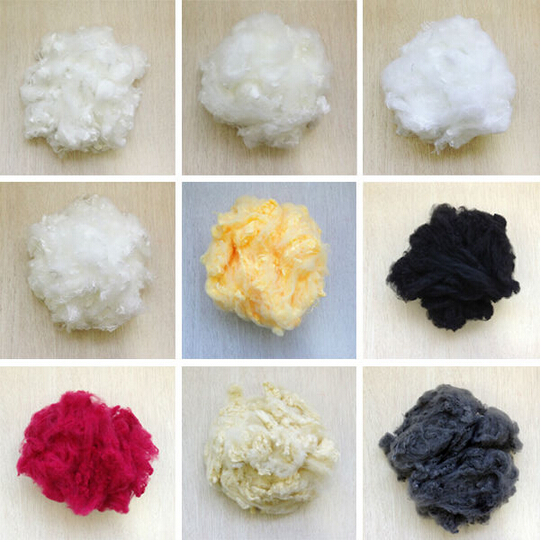
FAQ
We have organized several common questions for our clients,may help you sincerely:
1>How about your company?
A manufacturer & supplier focuses on the production of PP staple fiber which is used as the raw material of textile, automotive interior etc. We have exported this product to Amereica, Europe and South East Asia. Customized product is also available based on your detailed requirements.
2> What's the MOQ ?
We kindly recommend 1x40'HQ as the price would be economical based on large loading quantity.
3>How long can we receive the product after purchase?
It takes about 1 to 2 weeks to finish the production based on the specific production schedual. Then it will depend on the shipping time from loading port to the destination port.
- Q: What are the main ingredients of synthetic fibers, man-made fibers, and carbon fibers?
- Synthetic and man-made fibres are collectively referred to as chemical fibers, or chemical fibres. However, at present, the word "chemical fiber" is gradually moving closer to synthetic fiber, and most people call "chemical fiber", most of which refers to synthetic fiber. Carbon fiber: a category it belongs to chemical fiber. Carbon fiber composite material is the mixture of inorganic polymer fibers is higher than 90% of the carbon content can be as carbon but industrial production will be added to other materials itself has no fixed formula
- Q: What is the density of polyester?
- Poly (ethylene terephthalate) is prepared by esterification of terephthalic acid two methyl ester with ethylene glycol ester or esterification of terephthalic acid with ethylene glycol. The average molecular weight (2-3) x 104 of the crystalline saturated polyester is 1.5-1.8. The average molecular weight is equal to the molecular weight. The relative density is 1.368., the melting point is 225 DEG C, the flow temperature is 243 DEG C: the glass transition temperature is 80 DEG C, Martin is heat-resistant 80 DEG C, the thermal deformation temperature is 98 DEG C (1. 82MPa), and the decomposition temperature is 353 DEG C. With good mechanical properties, high rigidity, high hardness, low water absorption and good dimensional stability. Good toughness, impact resistance, friction resistance and creep resistance. Good chemical resistance, soluble in cresol, concentrated sulfuric acid, nitrobenzene, three chloroacetic acid, chlorophenol, insoluble in methanol, ethanol, acetone, alkane. Use temperature -100 ~ 120 degrees centigrade.
- Q: 100% does polyester fiber stretch?
- There are many kinds of polyester fiber: PET, PBT, PTTThe former is commonly referred to as polyester PET (polyethylene terephthalate)The second is an elastic PBT (polybutylene terephthalate)Third flexible and memory functional PTT (poly (ethylene terephthalate))
- Q: Does Vic fiber belong to admixture?
- Therefore, according to the definition of admixture, I think "Vic" fiber can improve the crack resistance of concrete after hardening, it should belong to admixture.
- Q: 100% polyester fabric clothing, there is a special laundry method?
- Polyester is acid, non alkali, and if you insist on washing machine, you can set a laundry bag, with neutral laundry detergent.
- Q: Which kind of air conditioner is acetate fiber and polyester fiber?
- If you want from the fiber properties, which belongs to the artificial cellulose fiber acetate fiber, more hygroscopic, feel soft, not easy to produce static electricity, usually used for high-end clothing lining, as well as some kind of fashion clothes.
- Q: What is the difference between microfiber fabric and modal fabric? What is the use?
- Modal product because it has good softness and excellent moisture absorption, but the fabric Tingkuo difference features, now mostly used in the production of underwear. Modal knitted fabrics are mainly used for making underwear. But the modal has a silver sheen, excellent dyeability and dyeing characteristics of bright color, would be used to coat. Because of this, the modal becomes the coat and decorative cloth material. In order to improve the product keeps its pure modal shortcomings, modal can be blended with other fibers, and can achieve good results. JM/C (50/50) can make up for this shortcoming. Blended fabrics made from such yarns make cotton fibers more supple and improve the fabric's appearance. Modal in the fabric weaving process can also reflect their organization, but also other fibers of the yarn can be woven and woven into various fabrics. Modal products have broad prospects for development in modern clothing
- Q: What are the benefits of a full carbon fiber roof?
- The utility model can be molded in different parts to reduce the number of parts, so as to facilitate the modularization and integration manufacture of the automobile structure.(6) beautiful appearance, black weaving lines, stylish and elegant, low-key luxury.
- Q: What are the benefits of bamboo fiber products?
- Bamboo fiber fabric has natural antibacterial properties, it can effectively prevent bacterial growth, skin diseases and genital itching and other symptoms
- Q: Will the clothes of polyester fiber shrink in hot water?
- And cotton and viscose fiber belong to cellulose fiber, moisture absorption is very good, so generally do close clothing, easy to absorb sweat, but this kind of fiber relative to synthetic fiber more easily wrinkle.
Send your message to us
Polyester Staple Fiber 15DX32MM for Nonwoven Fabric
- Loading Port:
- China main port
- Payment Terms:
- TT OR LC
- Min Order Qty:
- 10 m.t.
- Supply Capability:
- 5000 m.t./month
OKorder Service Pledge
OKorder Financial Service
Similar products
Hot products
Hot Searches
Related keywords
